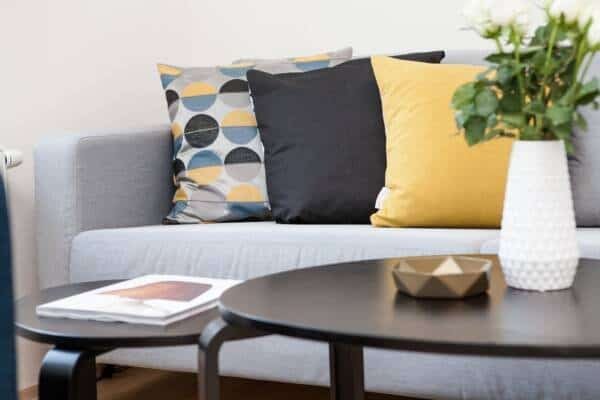Green Dreams: Transforming Your Bedroom with Sleep-Enhancing and Air-Purifying Plants

Creating a restful and healthy sleep environment is essential for our well-being. While comfortable bedding and a quiet atmosphere are crucial, there’s another element that can significantly improve your sleep quality and overall health: plants. These green companions not only beautify your space but also enhance air quality and promote relaxation. In this guide, we’ll explore how integrating sleep-enhancing and air-purifying plants into your bedroom can transform it into a serene sanctuary. From understanding the science behind their benefits to discovering the best plant varieties for sleep and air purification, you’ll find all the tips and recommendations you need to cultivate a green oasis that supports restful sleep and overall wellness. Let’s delve into how nature’s wonders can help you achieve those green dreams.
1. The Science Behind Plants and Sleep

1.1. How plants affect air quality
Plants are nature’s air purifiers. They absorb carbon dioxide and release oxygen through photosynthesis. But that’s not all – many plants also filter out harmful toxins from the air. NASA research has shown that certain plants can remove up to 87% of air toxins in 24 hours. Pretty impressive, right?
1.2. The connection between air quality and sleep
Have you ever noticed how much better you sleep when the air feels fresh and clean? There’s a good reason for that. Poor air quality can lead to breathing difficulties, allergies, and even headaches – all of which can disrupt your sleep. By improving the air quality in your bedroom, you’re setting the stage for a more restful night.
1.3. Plant-produced compounds that promote relaxation
Some plants are like nature’s aromatherapy diffusers. They release compounds that can help us relax and unwind. For example, lavender produces linalool, a compound known for its calming effects. It’s like having a gentle, natural sleep aid right by your bedside.
2. Top Plants for Better Sleep
2.1. Lavender: Nature’s sleep aid
Lavender isn’t just pretty – it’s a powerful sleep promoter. Its scent has been shown to lower heart rate and blood pressure, putting you in a relaxed state perfect for drifting off to dreamland. I keep a small pot of lavender on my nightstand, and the gentle fragrance helps me unwind after a long day.
2.2. Jasmine: Sweet dreams in bloom
Jasmine’s sweet scent isn’t just pleasant – it’s also linked to better sleep quality. Studies have found that people who sleep in jasmine-scented rooms report better sleep and increased alertness the next day. It’s like waking up on the right side of the bed every morning!
2.3. Valerian: The root of good sleep
Valerian might not win any beauty contests, but what it lacks in looks, it makes up for in sleep-promoting power. The root of this plant has been used for centuries as a natural remedy for insomnia. Just a whiff of its earthy scent can help you feel more relaxed and ready for sleep.
3. Best Air-Purifying Plants for the Bedroom
3.1. Snake Plant: The bedroom workhorse
Don’t let the name scare you – the Snake Plant is one of the most low-maintenance and effective air purifiers out there. It’s especially good at filtering out formaldehyde, which can be found in many household products. Plus, it releases oxygen at night, making it perfect for the bedroom.
3.2. Spider Plant: Easy-care air cleaner
Spider Plants are like the superheroes of the plant world. They’re incredibly effective at removing indoor air pollutants, and they’re nearly impossible to kill. I’ve had one in my bedroom for years, and it’s thrived despite my occasional forgetfulness with watering.
3.3. Peace Lily: Beautiful and effective
Peace Lilies aren’t just a pretty face – they’re also excellent air purifiers. They’re particularly good at removing ammonia, which can be found in some cleaning products. Just be careful if you have pets, as Peace Lilies can be toxic if ingested.
4. Dual-Purpose Plants: Sleep Enhancement and Air Purification
4.1. Aloe Vera: Oxygen booster and sleep promoter
Aloe Vera is like the Swiss Army knife of plants. It releases oxygen at night, improving air quality while you sleep. It also emits wavelengths that promote restfulness. And if you accidentally sunburn yourself, you’ve got a natural remedy right there!
4.2. English Ivy: Allergen reducer and sleep improver
If you’re an allergy sufferer, English Ivy might be your new best friend. It’s particularly good at filtering out airborne mold particles, which can interfere with sleep. I’ve noticed a big difference in my breathing since adding English Ivy to my bedroom.
4.3. Bamboo Palm: Humidifier and relaxation aid
Bamboo Palms are natural humidifiers, which can be great for your skin and respiratory system. They’re also excellent at filtering out benzene and trichloroethylene, chemicals often found in furniture and fabrics. Plus, their gentle rustling can create a soothing white noise to help you sleep.
5. Caring for Your Bedroom Plants
5.1. Light requirements for indoor plants
Most bedroom plants prefer indirect light. A spot near a window with a sheer curtain is often perfect. If your bedroom doesn’t get much natural light, don’t worry – many of these plants, like the Snake Plant, can tolerate low light conditions.
5.2. Watering and humidity needs
Overwatering is the most common way to kill indoor plants. As a general rule, it’s better to underwater than overwater. Most of these plants prefer their soil to dry out between waterings. For humidity-loving plants like the Peace Lily, a simple misting can work wonders.
5.3. Soil and fertilization tips
Good drainage is key for indoor plants. Use a well-draining potting mix and pots with drainage holes. Most indoor plants don’t need much fertilizer – a mild, all-purpose fertilizer applied once or twice during the growing season is usually enough.
6. Incorporating Plants into Your Bedroom Design
6.1. Ideal placement for maximum benefit
Place air-purifying plants near potential sources of pollutants, like electronic devices or new furniture. For sleep-promoting plants, keep them close to your bed where you can enjoy their scent. Just be sure not to crowd your nightstand – you still need room for that glass of water!
6.2. Stylish planters and stands
Planters are a great way to tie your plants into your bedroom decor. I love using a mix of hanging planters, floor stands, and tabletop pots to create visual interest at different levels. Just make sure any planter you choose has drainage holes.
6.3. Creating a cohesive plant-friendly decor
Think of your plants as living decor. Choose planters that complement your bedroom’s color scheme. You can even coordinate your bedding or curtains with your plants’ foliage for a cohesive look. I’ve found that adding a few plant-themed throw pillows or artwork can really tie the whole room together.
7. Summary: Cultivating Better Sleep with Nature’s Help
Adding plants to your bedroom is a simple yet effective way to improve both your sleep quality and your air quality. From the soothing scent of lavender to the air-purifying power of the Snake Plant, there’s a perfect plant (or two, or three!) for every bedroom. Remember, caring for your plants doesn’t have to be complicated – with a little attention and care, you can create a green oasis that promotes restful sleep and overall wellbeing.
8. FAQs
How many plants do I need in my bedroom?
There’s no magic number, but NASA recommends at least one plant per 100 square feet for effective air purification. For sleep benefits, even one or two plants can make a difference.
Are these plants safe for pets?
Some plants, like Peace Lilies and English Ivy, can be toxic to pets if ingested. Always research a plant’s safety before bringing it into a home with pets.
Can I use artificial plants instead?
While artificial plants can add a decorative touch, they won’t provide the air-purifying or sleep-promoting benefits of live plants.
How often should I replace my bedroom plants?
With proper care, most indoor plants can live for many years. There’s no need to replace them unless they become unhealthy or outgrow their space.
Will these plants attract insects?
Healthy indoor plants typically don’t attract insects. However, overwatering can lead to fungus gnats. Proper care and occasional inspection can prevent most pest issues.



